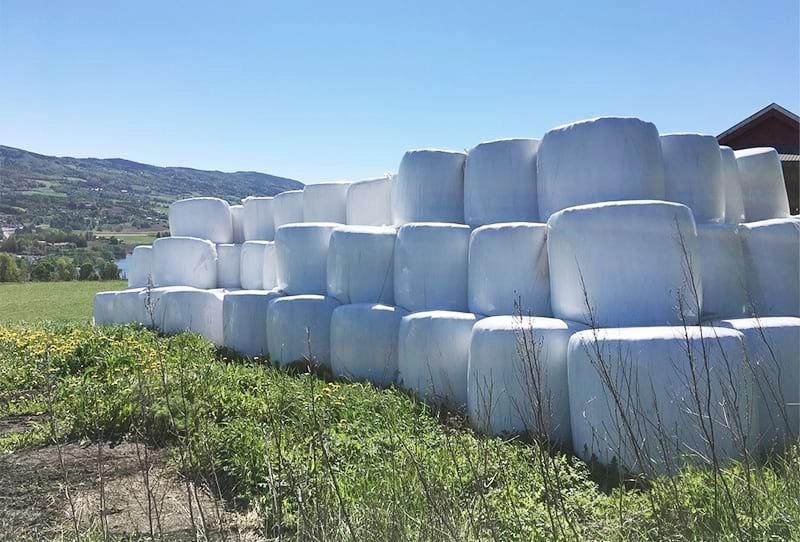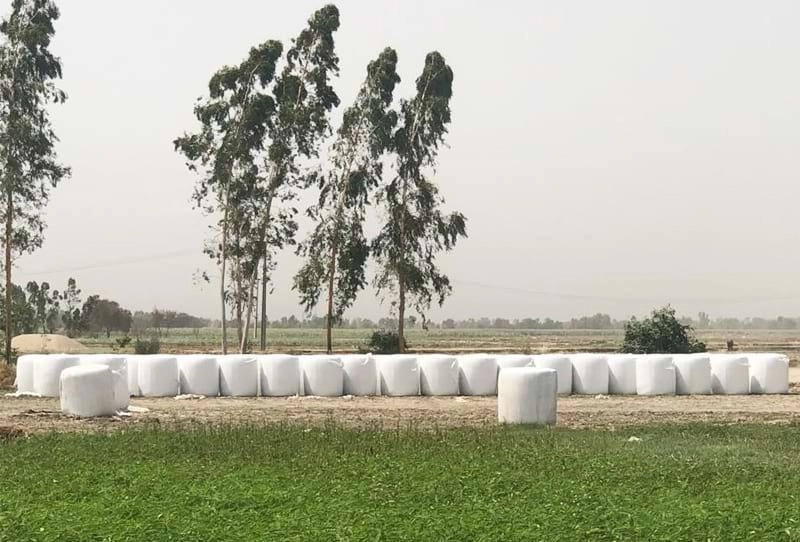
Silage film plays a pivotal role in modern agriculture, especially in the preservation of forage crops. Farmers rely on it to ensure high-quality silage, which ultimately impacts livestock nutrition and farm profitability. With the increasing interest in efficient farm management, the question arises: Is single-layer silage film sufficient for small farms? This article explores the topic in depth, examining the properties, benefits, and limitations of single-layer silage film while considering alternative solutions.
Understanding Silage Film and Its Purpose
Silage film, also known as stretch film or bale wrap, is designed to protect harvested forage from air and moisture. By creating an airtight seal, it allows for the fermentation process to proceed correctly, preserving the nutritional content of the forage. Silage film comes in various types, including single-layer and multi-layer options, each offering different levels of protection.
Single-layer silage film is typically made of polyethylene (PE), which provides a basic barrier against oxygen and water. This makes it an attractive choice for small farms due to its affordability and ease of use. However, understanding its limitations is crucial before making purchasing decisions. While it can maintain basic forage quality, single-layer films may be more prone to punctures, UV degradation, and tearing, especially under harsh weather conditions or when used for long-term storage.

Key Properties of Single-Layer Silage Film
| Property | Description |
|---|---|
| Material | Polyethylene (PE) |
| Thickness | Typically 25–30 microns |
| Oxygen Barrier | Moderate protection |
| UV Resistance | Basic level, may degrade over extended sunlight exposure |
| Tensile Strength | Suitable for small-scale bales |
| Cost | Lower compared to multi-layer films |
Understanding these properties helps small farm owners make informed decisions regarding their silage storage strategy.
Advantages of Single-Layer Silage Film for Small Farms
Single-layer silage film offers several advantages that make it suitable for small farms. First, it is cost-effective. Small farms often operate on tighter budgets, and single-layer films provide basic protection at a fraction of the price of multi-layer alternatives. Additionally, the application is simpler and requires less specialized equipment, which can be a significant benefit for farms with limited labor or machinery.
Another advantage is flexibility. Single-layer film is easier to stretch and wrap around irregularly shaped bales, allowing farmers to efficiently protect smaller quantities of forage. Moreover, it is lightweight, which simplifies handling and storage. For small-scale operations, this ease of use can translate into saved time and reduced labor costs, making single-layer film an appealing choice.
Furthermore, in climates with moderate weather conditions, single-layer silage film can perform adequately. The fermentation process is preserved, and forage spoilage is minimized. This highlights that while single-layer film may not offer the same durability as multi-layer options, it can still meet the essential needs of small farms when applied correctly and monitored regularly.
Limitations of Single-Layer Silage Film
Despite its advantages, single-layer silage film comes with limitations that should not be overlooked. One major concern is puncture risk. Animals, sharp edges, or environmental factors can easily damage single-layer film, exposing the silage to oxygen and moisture. Once this barrier is compromised, the fermentation process can be disrupted, leading to spoilage, mold growth, and nutrient loss.
UV degradation is another limitation. Prolonged exposure to sunlight can weaken the film, reducing its protective qualities. This makes storage time an important consideration. Small farms may manage this risk by storing wrapped bales under shade or using UV-protective covers, but such measures add extra steps and potential costs.
Lastly, single-layer films may not provide uniform tension during wrapping, potentially causing gaps or uneven coverage. This can lead to localized spoilage areas, especially in larger bales or irregularly shaped stacks. Therefore, while single-layer silage film is sufficient in certain scenarios, careful management and monitoring are essential to ensure silage quality.
Comparing Single-Layer and Multi-Layer Silage Films
To evaluate whether single-layer film is adequate, it is useful to compare it to multi-layer silage films. Multi-layer films combine multiple polyethylene layers with varying properties, such as enhanced UV resistance, superior tensile strength, and better oxygen barriers. While they offer higher durability and longer storage potential, they come at a higher cost and often require specialized wrapping equipment.
| Feature | Single-Layer Film | Multi-Layer Film |
|---|---|---|
| Cost | Low | Higher |
| Durability | Moderate | High |
| UV Resistance | Basic | Advanced |
| Oxygen Barrier | Moderate | Superior |
| Handling | Simple | Requires equipment |
| Storage Duration | Short–medium term | Medium–long term |
For small farms, the decision often comes down to balancing cost and storage duration. If forage will be consumed quickly or stored under controlled conditions, single-layer film can be a practical solution. For longer storage or harsher conditions, investing in multi-layer film may provide better protection and reduce losses.
Practical Tips for Using Single-Layer Silage Film Effectively
Even with its limitations, single-layer silage film can be used effectively if certain practices are followed. Firstly, bales should be properly compressed to minimize air pockets. This ensures that the fermentation process proceeds evenly. Secondly, careful attention should be paid to wrapping technique, ensuring complete coverage without gaps.
Thirdly, regular inspections are crucial. Any punctures or tears should be addressed immediately with patching materials to prevent spoilage. Additionally, storing wrapped bales under partial shade or using protective netting can reduce UV exposure and prolong film life. By implementing these measures, small farms can maximize the efficiency of single-layer silage film while maintaining high silage quality.

FAQ: Common Questions About Single-Layer Silage Film
Q1: Can single-layer silage film last through winter?
A1: It can last through moderate winter conditions, but extreme cold or snow accumulation may increase the risk of punctures.
Q2: Is single-layer film compatible with all types of forage?
A2: Yes, it works with most forage types, but dense or highly fibrous crops may require careful wrapping to prevent air pockets.
Q3: How many layers should I use for optimal preservation?
A3: For small farms with quick turnover, a single layer is often sufficient. For longer-term storage, 2–3 layers may be recommended.
Q4: How should damaged single-layer film be repaired?
A4: Use adhesive silage patches or additional wrap layers to seal punctures promptly and prevent spoilage.
Conclusion
In conclusion, single-layer silage film can indeed be sufficient for small farms, particularly when the forage is used promptly and proper handling practices are observed. It offers a cost-effective, flexible, and easy-to-apply solution for farmers with limited resources. However, its limitations—puncture susceptibility, UV degradation, and moderate oxygen barrier—necessitate careful management.
For small-scale operations, single-layer silage film presents a viable option, balancing affordability and functionality. By following best practices, inspecting bales regularly, and understanding the specific needs of their farm, farmers can preserve forage effectively without unnecessary expenditure on multi-layer alternatives.








